
5 common mistakes made when using music with your Kamishibai
You've probably already discovered the magical universe that opens up when you use music and sounds in your Kamishibai storytelling. It's almost a different story, isn't it? But watch out! There are five mistakes that you should avoid at all costs if you don't want the music, rather than upscale your stories, to sink them deep into the ocean. Music, maestros!
Hello, my dear gaitos kamishibaiya! Today I'm here to talk about what for me are the 5 most common mistakes made when including music in a Kamishibai performance. Some of them you probably didn't even know they could be seen as mistakes. But believe me, once you identify them and correct them (that is, if you make them), your performances with music will automatically become small unforgettable experiences. But wait a minute...
Who are you to talk about this?
You may ask yourselves. Well, some of you may already have heard of me, some may only know me from hearsay and others directly will be going in one ear and out the other...
I'm Iñaki Rubio and I'm a soundtrack composer. To be specific, I am dedicated to integrate music and sound into a story, whether it's a film, a play, a video game or, in this case, a Kamishibai story.
For more than 5 years I have been composing music and sounds for the Kamishibai PRO Premium Stories (BIG A3). That could mean a lot or it could mean nothing, but it is true that throughout these years I've seen how more and more gaitos kamishibaiya encourage themselves to integrate music and sounds in their narrations. Sometimes with enormous success. And some others... let's say not so much. :)
In any case, I have detected a series of errors that can be easily fixed and that I want to share with you. Sound familiar?
Mistake #1: Place the speaker anywhere.
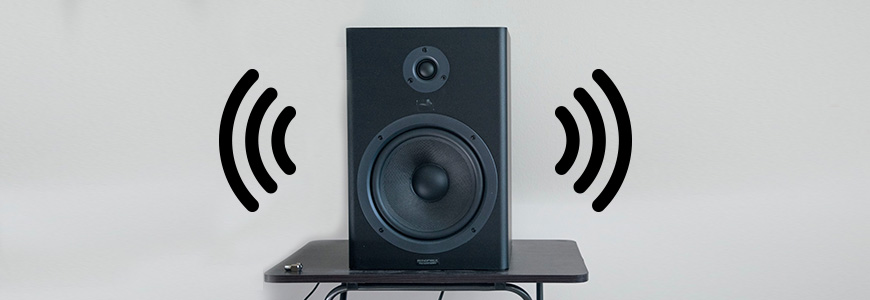
Fantastic. We have put a lot of effort into creating the perfect frame for our storytelling. The table on which our butai is placed is covered by a cloth all the way to the floor. Behind us there is a neutral background and the lighting of the room is well taken care of. Not only that, but this time we have also decided to integrate music and sounds in our narration. It's going to be a huge success!
But it turns out that we place our Bluetooth loudspeaker on top of a shelf in front of us, at the very top, just so that someone doesn't mess with it. Look, it even looks nice in the middle of those books.
Mistake!
We've turned our purpose of immersion into a disaster of distraction. It makes no sense that our voice comes from one place and the music from another. And even more so if the music and sounds arrive to the audience from a place where they're not staring. This is what will happen: when the music plays, everyone will turn their heads to look at the Bluetooth loudspeaker as if it were an ancestral totem. And your storytelling... well, no one will pay attention to that.
Workaround: always place the Bluetooth speaker behind you. Make sure that the first thing that reaches the audience is your voice, and then the music and sounds. The sound travels at the same speed regardless of the tone of your voice, no mistake is possible. In the ears of the audience the sound mix will be perfect, and your voice will always be the most important.
Besides, when possible hide the loudspeaker from the audience's view. Be careful! Try to let the front of the loudspeaker as open as possible, free of obstacles. Think of it as if it were a mouth: if you cover it, it will sound bad or dull, and it will not express with precision what it wants to say.
Mistake #2: Not having the volume control close.
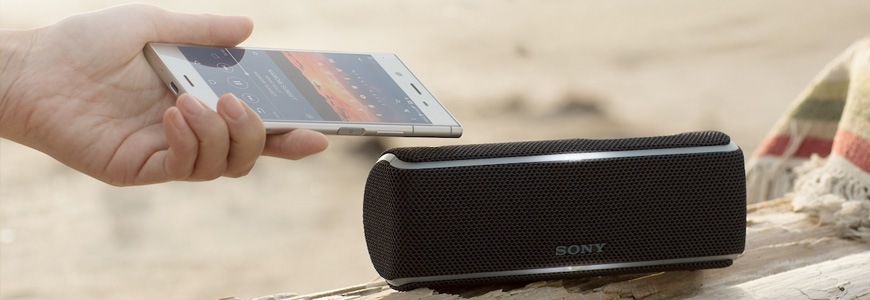
You're ready for your Kamishibai storytelling with music. You've even done a sound check with it, so that it's not too loud. Yes, this is the perfect volume. Let the show begin!
It turns out that we started and... Oh no, the music is loud at times. No problem, I can speak louder - you say -, I've always been told that I have a very good voice. Besides, I don't want to be distracted by that now, the most important thing is to devote my whole heart to telling the story. I would rather not touch the volume, which I' ve tried before and sounded good. It's not that important.
Mistake!
The volume, both of your voice and of the music and sounds you use, is a key element of your storytelling. With the right volume of all the elements at each moment of the story, not only do we favour its comprehension, but we also add layers of meaning and details to our performance, which would otherwise be flatter and more boring than an ironing board.
Workaround: keep your player's volume control close at hand. Make it so that turning the volume up and down can almost be done without looking. And of course, you should not need to travel around to do it.
The idea is to make volumes dynamic, adapted to each moment, and working with them to your advantage. If you finish the performance and haven't touched the volume at all, ask yourself if it was a success or if you really didn't even pay attention to what was sounding.
Mistake #3: Using a player that takes a thousand years to change tracks.
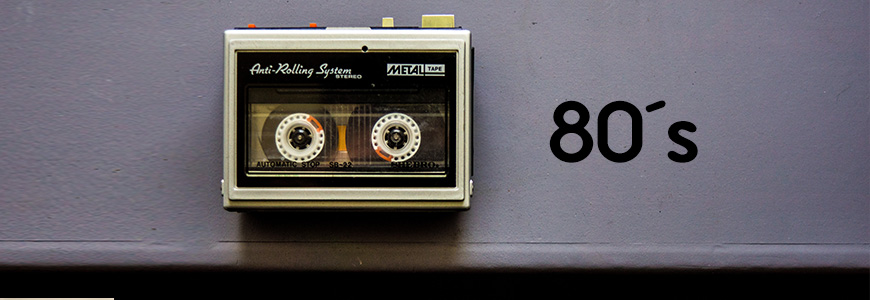
- Hey! We're about to start. Shall I tell them to come in?
- Wait a second, I still haven't tried the music. Whoops... Hey, we had a CD player out there, didn't we? I forgot to make the music available offline on my cell phone...
- Yeah, here you go, I don't know if that will do.
Great, you tell yourself. Truth is that it took it a little while to read the CD, and when you change tracks it sounds like it' s ice-skating for a while, but, hey, eventually... it does the job!
- Let them in!
Mistake!
Changing from one music or sound atmosphere to another is one of the most delicate moments in a Kamishibai performance with music. There has to be as little time as possible from the moment you change the track until it is effectively done. That silence created, when unintentional, can be very uncomfortable, disconcerting and can cause all the magic crafted to break suddenly and never come back. It's just like the time you spend placing the story card on the back of the theater (after sliding it), as we saw in our article How to tell the Kamishibai story "The Sun Cat" (with music).
Workaround: use a fast music player that doesn't take long to change tracks. The ideal is that there is not even half a second of pause from when you tell it to "change the track" until it finally does it. So if you're going to use music from Spotify, for example, make it available offline so you don't have to rely on your data connection.
The goal is to create as little distraction as possible, both in your audience and in your player, so always use airplane mode whenever possible (if it has one) and get rid of all those notifications that could hijack Spotify in the middle of your performance.
Mistake #4: Changing the music at the most inconvenient moment.

One of the first things I decide as a composer when creating music for a Kamishibai story is where to change to the next track and why. Even before I sit down to compose a main theme or design a soundscape.
In my early days, I used to look very closely at the details of the narrative of the story, pretending that the music would follow the dramatic structure very closely with its own musical script, playing for or against, so that it would reflect the action or emotion at all times... "In this moment we'll hear a Ewww, then a Whoa, and finally a Zing! It's going to be amazing!" Or maybe not. This kind of things maybe fantastic for a movie or a video game, but are totally out of place in a Kamishibai narration. So now I tell myself:
Mistake!
It is important to consider Kamishibai as a technique that is halfway between theater and movies. But it's neither one nor the other, that's why it's so special. So the music or the sound atmosphere, although they must have a great connection with the story, cannot change in the moment that we think best, but in the moment that is most convenient and simple for its storyteller.
Solution: Usally the most appropriate moment is, whether I like it or not, to change Track at the end of the story card. That is, once the gaito is done with the narration of the current story card and is ready to move on to the next one.
The challenge as a musician (and I'm telling you this in case you want to select music for a Kamishibai or even work with live musicians) comes when creating or choosing the sound content for the story card ahead. It should cover it in its whole, not in its details. If not, we'll make the storyteller go crazy. In some stories, such as Why are there so many stones on riverbeds? o Little Fishie I even composed a single track that evolves along several story cards, not only because it was important to unify the narrative of those specific cards, but also so that the storyteller focuses on the story, makes it dynamic and does not stop it by having to change track at a time that could be very inconvenient. Remember the impact that error #3 has on our audience.
Anyway, as we always change the story card after having hit the next track button, I recommend what I do, which is to use 4-5 seconds of music and/or sounds prior to the development of the track itself, to help present the next card and create the appropriate climate for what's to come. While bringing the new story card to life, we help the audience to forget a possible wait because of that unfortunate mistake #3. Mother Kangaroo and Her Pouch's music is a good example of this technique:
Mistake #5: Using music as background.

At this point, you may abort mission, think that music is best left for musicians and never integrate it into your storytelling. If that's a mistake or not, only you can tell.
You can also choose your own music. Of course! How nice this song is so low during the narration, so lively, so beautiful, so magical... It's from the How to Train Your Dragon soundtrack, but... who will know? It' s so beautiful in the background during the story.
Mistake!
No, I'm not jealous at all. I really think it's a great idea to use a different music in a story that already has my music. But using "background" music in a Kamishibai storytelling is directly counterproductive. It distracts, confuses, is often unnecessary and, moreover, changes the meaning and structure of your story, always for the worse.
Workaround: remove the expression "background music" from your vocabulary. When you talk like that, you are assuming that music goes on one side and storytelling on the other, and that sound's only function is to create an atmosphere. Upgrade your conception of sound and you will upgrade your Kamishibai performance. Try it out. Besides, for you a Kamishibai performance is not just about "reading", is it?
Be a little more ambitious and make sure that the music is integrated into the story. It's not enough to set the mood, and of course, don't play the same music all the time throughout the story! Use different types of music and/or sound atmospheres according to the narrative structure of the story, its characters and its action. And it will be exceptional if together they create a unique soundmark.
In the latest Kamishibai soundtrack that I composed, The Southern Cross, I've tried to make music not only take us to a remote world where the Tehuelches (hunter-gatherers of ancient Chile) lived, that it evolves along the story told. To do this, I use musical motifs linked to their characters that mutate according to their aspirations, conflicts or resolutions. For example, the theme linked to the famous constellation only appears in its most melodic form at the end of the story, when it is fully formed in the sky and we understand that thanks to it we know where the South is. Not only that, its sonority is based as much on the theme linked to the Great Rhea as on that of Korkoronke, it's a mixture of both. So we tell in a musical way that the Southern Cross was born by the mark that the Great Rhea left in the sky when escaping from Korkoronke's bolase, which is the explanation given by the Tehuelches. And one last layer on top of it is its deliberately melancholic and evocative tone, since it's Korkoronke, already an old man, who, looking at the Southern Cross, is happy not to have hunted such a magical animal.
Okay, it's all very nice, but... What is the purpose of all this? Well, no more and no less than to integrate music so deep into your storytelling that it feels incomplete without it.
May the music be with you

I know, it's such a phrase cliché and, besides, it doesn't express exactly what we want when we integrate music and sound in our storytelling, but I couldn't think of any other. Please forgive me!!
Have you noticed any other errors that repeat themselves when telling Kamishibai stories with music? Do you find any difficulty in using it? Do you miss it in any of our stories? Share it with the rest of the gaitos kamishibaiya leaving a comment below and I'll be happy to reply!
And if you've found something of value in this article do not forget to share it and Like it: your acknowledgement is our engine to continue spreading the magic of Kamishibai.
See you in our next article!
Deja un comentarioDa una respuesta
Blog categories
Archivo del blog
Buscar
Últimos comentarios
Fabiana BEGAUD
en How to illustrate a Kamishibai PRO DIY story...claudine legac
en Got a new website, blog and many renewed hopes!claudine legac
en How to tell the Kamishibai story "The Sun Cat"...Nicole MIKOLAJEK
en What would you do if you had a Kamishibai?...

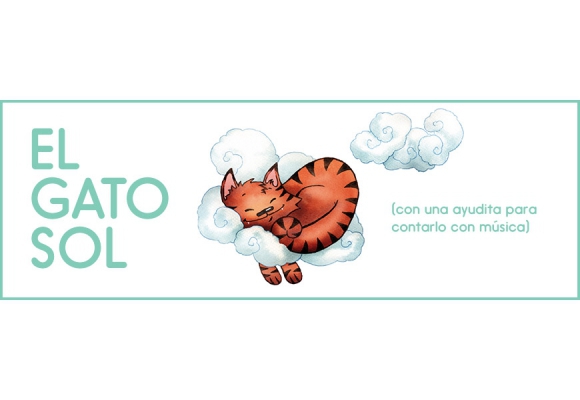

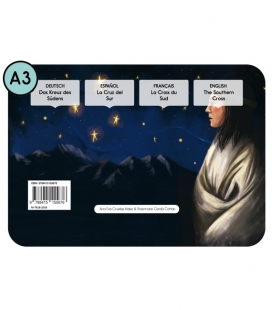


3 Comentarios
dara martinez san jorge 05/10/2018
Hola yo nunca me animé a meter música , como recomiendas hacerlo Y recomiendas hacerlo con el micrófono de voz también ,qué tipo de aparato reproductor o de qué forma consideras que es mejor meter la música y tu vozIñaki de Kamishibai® Universe 06/10/2018
Es un poco intimidante, ¿verdad Dara? Sin embargo, con un poquillo de práctica, es mucho más fácil de lo que a priori parece.Quizá al principio sea una buena idea hacerlo de la manera más sencilla posible. Yo recomiendo utilizar un reproductor pequeño que tenga Bluetooth. Un teléfono móvil, por ejemplo, que todos tenemos uno. Pasar las pistas del CD a nuestro móvil es muy fácil, pero si no hay manera siempre podemos usar Spotify o Apple Music, ya que toda la música se encuentra también allí. YouTube no lo recomiendo porque es un poco lío de usar en directo y además es lento al cambiar de pista, pero también podría ser una posibilidad.
El tipo de altavoz a usar dependerá sobre todo de dónde vayamos a hacer nuestras sesiones Kamishibai. Cuanto más publico tengamos y más grande sea la sala, más potencia necesitaremos en el sonido. Para espacios interiores tipo aulas, bibliotecas o similares y una audiencia de unas 20 personas, es suficiente con un pequeño altavoz Bluetooth (recuerda, siempre colocado detrás nuestra). De verdad que lo de no tener cables de ningún tipo es un puntazo a favor de la sencillez.
Y con respecto a usar o no micrófono, pues todo va a depender de dónde vayamos a realizar nuestras sesiones Kamishibai. Normalmente es más efectivo buscar el lugar idóneo acústicamente para nuestras narraciones que microfonarnos. ¿Te interesa saber más sobre esto? Quizá sea una buena idea escribir un artículo sobre cómo elegir el mejor lugar de un espacio para que nuestras narraciones se ecuchen lo mejor posible. ¿Cómo lo ves?
Aún así, si no nos queda otra porque el espacio tiene una acústica nefasta o tenemos una audiencia enorme, lo ideal es un micrófono de diadema o solapa (tipo lavalier) inalámbrico (es decir, con petaca). Si lo tenemos que sujetar con la mano, nos estaremos poniendo las cosas aún más difíciles (no quiero ni pensar en el show que hay que montar para pasar las láminas con un micrófono dinámico de mano). Sin embargo, aquí es donde nuestras necesidades de presupuesto y tiempo empiezan a crecer de manera exponencial: necesitaremos un sistema de sonido (o altavoz) que permita conectar al mismo tiempo un micrófono y nuestra música, habrá que estar pendiente de cómo suena todo en conjunto, deberemos ensayar más para habituarnos a tener micrófono... Mi opinión es que siempre que podamos prescindir de él, mejor.
No sé si he resuelto tus dudas, pero te animo a que le des una oportunidad a integrar música en tus sesiones Kamishibai y me cuentes qué tal te ha ido. :)
Iñaki de Kamishibai® Universe 27/09/2018
Venga, para que os animéis a comentar, aquí os dejo otro error común que no sale en el artículo:Error #6: Olvidar dar al botón Pause.
Resulta que os venís arriba con una lámina, os liáis a improvisar y a interactuar con vuestro público, todo el mundo está encantado de la vida, pero, de repente, se empieza a reproducir el siguiente Track. A ver quién puede hablar sobre los pingüinos con una ballena sonando por nuestro altavoz.
Solución: si vais a improvisar, aprovechad la larga coda de silencio que tienen todos los Tracks para darle al botón Pause. Pero ojo, antes de continuar con la narración, no olvidéis darle al botón Play!